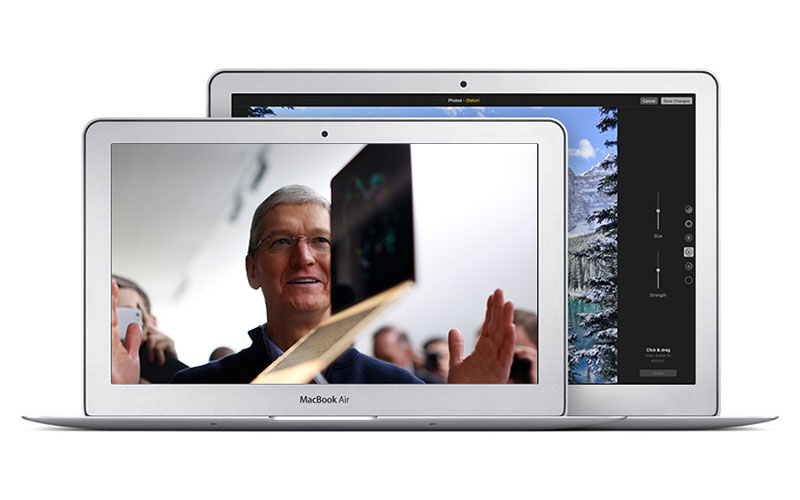
The legacy of the MacBook Air is now eight years old, starting with the “MacBook Air MB003LL/A”, launched in early 2008. Its initial run, through 2009, wasn’t particularly impressive, aside from its thinness.
The original 13 inch MacBook Air sported a 13 inch screen with a resolution of 1280x800, driven by a choice of an NVIDIA GeForce 9400M with 256GB of DDR3 RAM, or an Intel GMA X3100, with 144MB of DDR2 SDRAM. Depending on the choice of card, the laptop would come with different external video output: a Micro DVI if you went for the GMA, and DisplayPort if you went for the NVIDIA version.
By this token, the original MacBook Air was not touted for its powerful processing, but rather for its portability and thinness, which was really the selling point of the MacBook Air. With that said, the Air has come a long way since those humble beginnings, shrinking its profile with every new iteration, as well as ramping up its processing capabilities and GPU performance.
The last radical reboot of the MacBook Air didn’t happen until 2012, when Apple decided to go all-Intel for the MacBook Air, and began integrating Intel HD Graphics, all the way to its last 2015 iteration. During that same year, the 12 inch MacBook Retina was unveiled, bringing a range of new features, including Force Touch, the Butterfly keyboard mechanism, as well as a new terraced design for the battery.
When Apple decided to expand the Force Touch trackpad and butterfly key mechanism onto all Mac laptops, MacBook Air fans crossed their fingers hoping that the MacBook Air would eventually get a Retina display, but once again, Apple held back on the MacBook Air’s most glaring shortcoming, to invest more resources into another brand new product: the iPad Pro, which managed to cast a darker shadow onto the MacBook Air, as Apple pitched the new premium-sized iPad as a Windows laptop killer.
Here comes the second half of 2016, without a single evidence supporting a reboot of the MacBook Air, with or without a Retina display. This begs the question on whether the 2015 MacBook Air is really the last of its kind, considering that the 12 inch MacBook Retina is the embodiment of battery efficiency, thinness, and portability, more than the MacBook Air ever was, not to mention its Retina display, as the last nail into the Air’s coffin.
There is also the question on the unofficial Apple rebranding, slowly but surely influencing the direction of many flagship products like the MacBook and the iPad, with Apple changing the name of its Mac OS X operating system to macOS, as well as focusing on a MacBook without suffixes. On top of that, rumors have it of the demise of the iPad Air product line in favor of a leaner-meaner iPad to join the iPad Pro in a new/old trend of duality suggesting a return to Apple’s own roots of simplicity, as the answer to the question “can you have too much of a good thing?”.
Apple has branched off into many different directions, exploring how consumers react to variations of its flagship products, and the MacBook Air is a perfect example of it. A MacBook Air to replace an aging MacBook with a new Air suffix in 2008, which ironically seems to come full-circle, with a new MacBook replacing an aging MacBook Air in 2015.
Why isn’t there anything official yet, then? This is the big end-of-line question
The MacBook Air may fall short of the 12 inch MacBook in a few areas, but one key area in which the MacBook air is a winner, is price. The 12 inch MacBook is still $300 more expensive than the MacBook Air. With many users on a budget, being able to get a MacBook for less than a thousand dollar is a great deal, even to get an 11 inch MacBook Air, which still comes with a slightly faster processor. This could be the motivation for Apple not to release any information about the fate of the MacBook Air, except for the clue about its non-Retina screen.